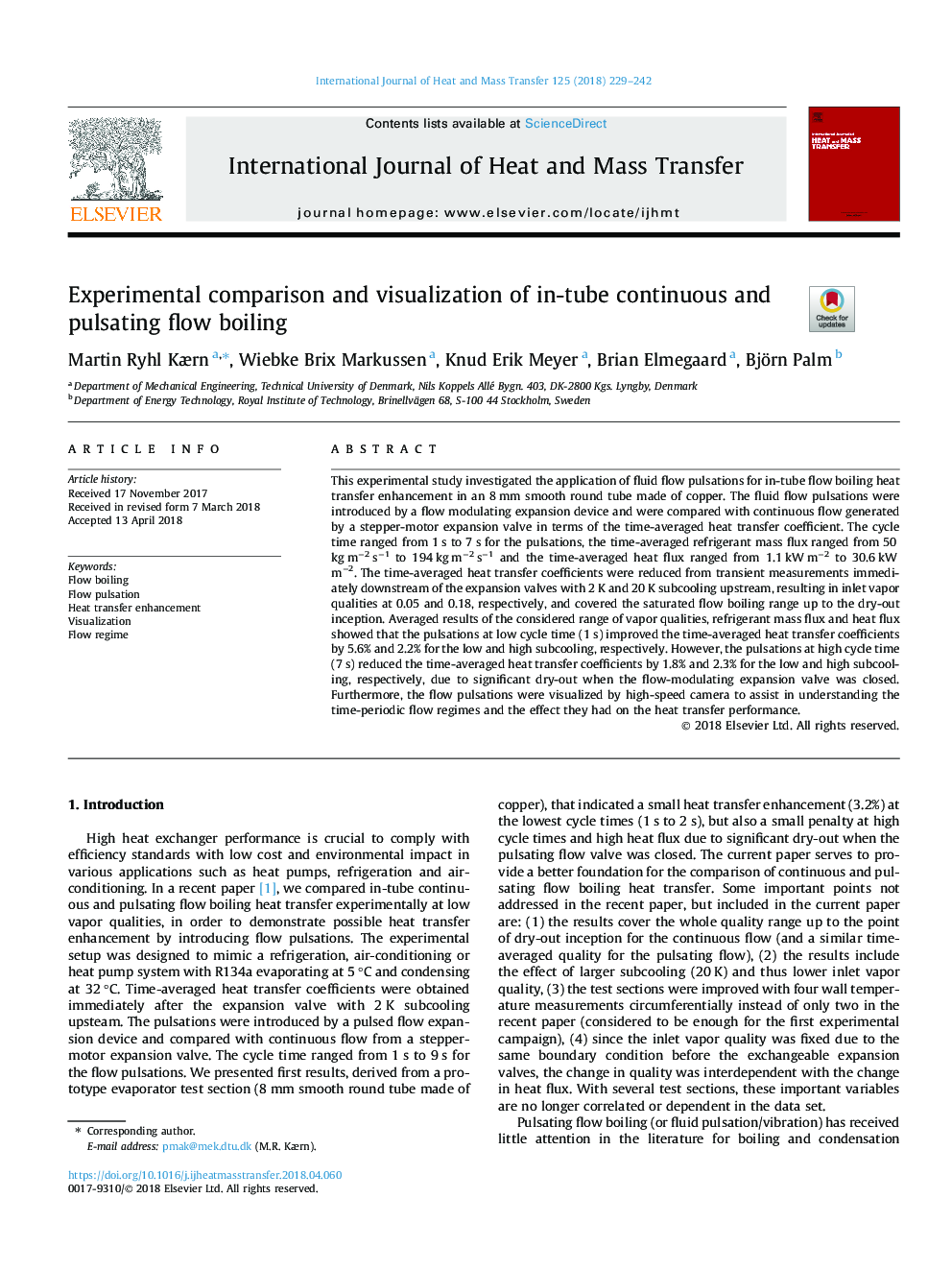| Article ID | Journal | Published Year | Pages | File Type |
|---|---|---|---|---|
| 7054030 | International Journal of Heat and Mass Transfer | 2018 | 14 Pages |
Abstract
This experimental study investigated the application of fluid flow pulsations for in-tube flow boiling heat transfer enhancement in an 8â¯mm smooth round tube made of copper. The fluid flow pulsations were introduced by a flow modulating expansion device and were compared with continuous flow generated by a stepper-motor expansion valve in terms of the time-averaged heat transfer coefficient. The cycle time ranged from 1â¯s to 7â¯s for the pulsations, the time-averaged refrigerant mass flux ranged from 50â¯kgâ¯mâ2â¯sâ1 to 194â¯kgâ¯mâ2â¯sâ1 and the time-averaged heat flux ranged from 1.1â¯kWâ¯mâ2 to 30.6â¯kWâ¯mâ2. The time-averaged heat transfer coefficients were reduced from transient measurements immediately downstream of the expansion valves with 2â¯K and 20â¯K subcooling upstream, resulting in inlet vapor qualities at 0.05 and 0.18, respectively, and covered the saturated flow boiling range up to the dry-out inception. Averaged results of the considered range of vapor qualities, refrigerant mass flux and heat flux showed that the pulsations at low cycle time (1â¯s) improved the time-averaged heat transfer coefficients by 5.6% and 2.2% for the low and high subcooling, respectively. However, the pulsations at high cycle time (7â¯s) reduced the time-averaged heat transfer coefficients by 1.8% and 2.3% for the low and high subcooling, respectively, due to significant dry-out when the flow-modulating expansion valve was closed. Furthermore, the flow pulsations were visualized by high-speed camera to assist in understanding the time-periodic flow regimes and the effect they had on the heat transfer performance.
Related Topics
Physical Sciences and Engineering
Chemical Engineering
Fluid Flow and Transfer Processes
Authors
Martin Ryhl Kærn, Wiebke Brix Markussen, Knud Erik Meyer, Brian Elmegaard, Björn Palm,
